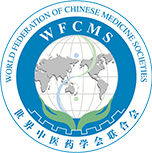Network pharmacology-based and pharmacological evaluation of the effects of Curcumae Radix on cerebral ischemia–Reperfusion injury
Release time: Aug 29,2023
Reading volume: 787
Objective: This study aimed to investigate the network pharmacology of curcumae radix (CR, Yujin) and explore the mechanism of CR in the treatment of cerebral ischemia–reperfusion injury (CIRI).
Materials and Methods: Network analysis and pharmacological evaluation were performed to explore the protective role of CR to treat CIRI. The potential target genes of the active components and CIRI were identified using SwissTarget Prediction, Bioinformatics Analysis Tool for Molecular mechANism of Traditional Chinese Medicine, GeneCards, and Online Mendelian Inheritance in Man. Furthermore, network analysis was performed using Cytoscape software. Gene ontology analysis and Kyoto Encyclopedia of Genes and Genomes enrichment analysis were performed using the R software. In vivo experiments were performed using the water extract of CR (WECR) on PC12 cells induced by hypoxia/reoxygenation (H/R) to simulate ischemia/reperfusion injury.
Results: The results exhibited that 21 active compounds identified in CR were associated with 73 targets of CIRI. Functional analysis showed that multiple pathways, including response to stress, regulation of apoptotic process, and hypoxia-inducible factor 1 signaling pathway, were significantly enriched. In addition, STAT3, IL4, HIFIA, and CTNNB1 were predicted to be the most important genes among the 36 hub genes. Furthermore, WECR treatment significantly improved PC12 cell injury and decreased apoptosis levels in cells induced by H/R, with malondialdehyde contents reduced and superoxide dismutase or glutathione peroxidase levels increased.
Conclusions: Network analysis and pharmacological evaluation of CR could provide valuable directions for further research on CR and improve comprehension of CIRI.
[FULL TEXT]
Materials and Methods: Network analysis and pharmacological evaluation were performed to explore the protective role of CR to treat CIRI. The potential target genes of the active components and CIRI were identified using SwissTarget Prediction, Bioinformatics Analysis Tool for Molecular mechANism of Traditional Chinese Medicine, GeneCards, and Online Mendelian Inheritance in Man. Furthermore, network analysis was performed using Cytoscape software. Gene ontology analysis and Kyoto Encyclopedia of Genes and Genomes enrichment analysis were performed using the R software. In vivo experiments were performed using the water extract of CR (WECR) on PC12 cells induced by hypoxia/reoxygenation (H/R) to simulate ischemia/reperfusion injury.
Results: The results exhibited that 21 active compounds identified in CR were associated with 73 targets of CIRI. Functional analysis showed that multiple pathways, including response to stress, regulation of apoptotic process, and hypoxia-inducible factor 1 signaling pathway, were significantly enriched. In addition, STAT3, IL4, HIFIA, and CTNNB1 were predicted to be the most important genes among the 36 hub genes. Furthermore, WECR treatment significantly improved PC12 cell injury and decreased apoptosis levels in cells induced by H/R, with malondialdehyde contents reduced and superoxide dismutase or glutathione peroxidase levels increased.
Conclusions: Network analysis and pharmacological evaluation of CR could provide valuable directions for further research on CR and improve comprehension of CIRI.
[FULL TEXT]

